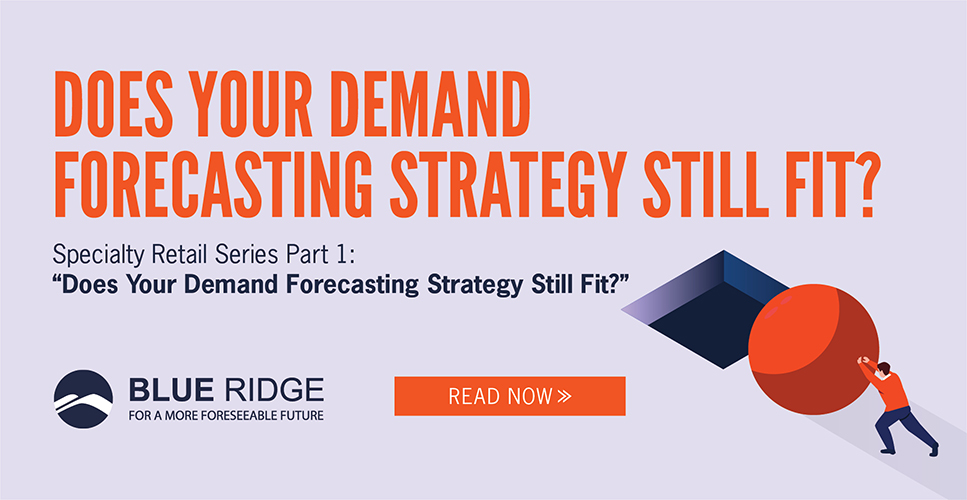10 Eye-Popping Statistics About Retail Inventory Planning
 Retail is probably one of the hardest hit industries when it comes to inventory planning this year. Particularly with specialty retail businesses (i.e., those that stock replenishable goods versus ‘fashion’ items that will go out of style -- typically after one season -- then never get reordered).
Retail is probably one of the hardest hit industries when it comes to inventory planning this year. Particularly with specialty retail businesses (i.e., those that stock replenishable goods versus ‘fashion’ items that will go out of style -- typically after one season -- then never get reordered).
Specialty retail inventory might be, for example, hard goods like batteries, home fitness equipment and light bulbs. These goods always need replenishment; yet, retailers still struggle greatly to keep inventory on these items in check.
Not Just a Pandemic Problem
To be fair, I’m not just talking about toilet paper or cleaning supplies during a pandemic. That's a storm that no one could've seen coming. But rewind a few months (years, decades!) and you'll see that proper inventory planning (not too much and not too little) has always plagued retailers.
Usually it’s a forecasting inaccuracy or visibility problem, which leads to detrimental revenue and profit losses, as well as shell shock on operational facilities. At the root of the problem is that many retailers have not adapted their forecasting strategy to evolve at the volatile pace of ecommerce revolution.
So where demand used to be forecast at the point of sale, it now needs to be forecast at the point where items are fulfilled.
No matter how you slice it, the cost of this mismatch has been huge, as you will see in the statistics below.
We’d like to thank Conveyco for these…
Statistics About Retail Inventory Accuracy and Visibility
- 43% of small businesses don’t track inventory or do so using a manual system
- The average retail operation has an inventory accuracy of only 63%
- 34% of businesses have shipped an order late because they inadvertently sold a product that was not in stock
- Worldwide cost of inventory distortion (including shrinkage, stockouts, and overstock) is an estimated $1.1 trillion
- Reducing stockouts and overstocks can lower your overall inventory costs by 10% (see how)
- By some estimates, item-level tagging, when implemented properly, can increase inventory accuracy from 63% to 95%
- Approximately 72% of all retailers plan to leverage real-time inventory visibility—enabled by automation, sensors, and analytics—to reinvent their supply chains
- As of June 2019, U.S. retailers are sitting on approximately $1.36 of inventory for every $1 in sales
- Since 2013, the number of private warehouses in the U.S. has risen from 15,763 to 18,182—a growth of 2,419 facilities, or more than 15.3%
- But there is a movement towards smaller warehouses—as small as 200,000 to 50,000 square feet in some cases, from an average of about 400,000 square feet
Oh and in case you were wondering, Conveyco is a leading systems integrator of automated material handling systems based in Bristol, Connecticut.
What You Can Do About it
If you’re a specialty retailer struggling to get a handle on retail inventory planning, now is a great time to re-examine your demand forecasting strategy. This eBook can help:



Comments are closed.